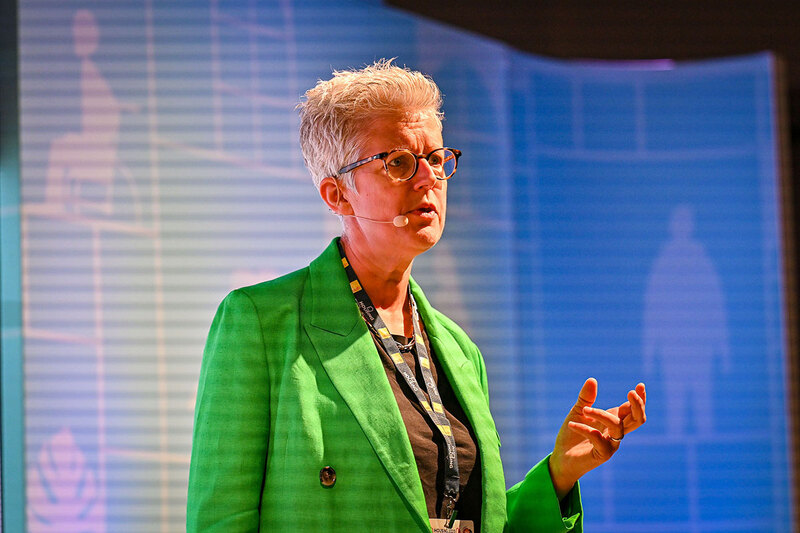Delivering Southern Housing’s merger – one year on
Almost a year ago, Tom Paul and Paula Steel walked us through their plans for achieving business integration at the new Southern Housing. Now they share the highs and lows of the experience so far
It’s now 14 months since the merger, and we have another 14 to go if we are to achieve our goal of completing post-merger integration by April 2025.
Over the past year we’ve faced all manner of challenges, but we’re pleased to report phenomenally positive engagement from colleagues and that our integration programme remains on track.
In our article last year we analysed our integration programme into six themes: governance; strategy and policy; people and communications; technology; data; and process and service design. In this update we look at each in turn.
Governance
Our merger was an amalgamation of our legacy parent housing associations, Optivo and Southern Housing Group, so we haven’t needed a second wave of merger activity around governance and treasury.
Instead, we’ve been able to focus on building a single team and a single culture for the new business, and on pruning our group structure.
We have four residents on our board, plus two observers from our resident strategy group, and their presence helps ensure we remain focused on our mission to serve residents.
We report in detail on our integration programme to a sub-committee of the board, which has been meeting almost monthly since merger.
Strategy and policy
The past year has not been without its challenges for the social housing sector, as readers will be only too familiar. Navigating this has thrown an extra ‘spice’ into our integration programme.
But we’ve had consistent support from our board for our focus on delivering post-merger integration on a broad front and at pace.
We have resisted the temptation to pivot to focus on any one particular area of the business, or on shiny ‘magpie’ projects. No ‘cloud-based GenAI-enabled smart multimodal metaverse experience app’ development from us.
We have had to accommodate some pressing day-to-day work, but mercifully colleagues have been very good at letting us retain focus and accepting when we say “not yet” in response to most requests for non-integration change.
People and communications
Nearly all teams have now been through our people change process, and had the opportunity to move to our new terms and conditions.
Data
We have identified owners for all business data, and data assurance plans in place for the areas with the highest risk data. The focus now is on data quality.
As we integrate each system, we work through an extensive process of data mapping, impact analysis and data migration, as well as plotting our data retention rules and archiving.
This has in some areas been really hard going, and we’ve needed a couple of resets to make sure we get it right.
Technology
‘Behind the scenes’ technology work was a central preoccupation last year, as this unlocks all the colleague and resident-facing change that is now in train.
We now have aligned identifiers and a common Microsoft environment, and we’ve delivered our cyber security plans for the year. In the year ahead we’ll finish the process of moving everything to cloud.
Process and service design
Our integration programme motto is ‘adopt not adapt’. We analysed our two legacy systems and processes, picked the best one, and are using that as the basis for the integration programme.
Doing this has enabled us to move fast – just one of our 20-odd main customer or resident-facing systems is a ‘greenfield’ implementation to manage – and to reduce risk.
Crucially, though, it also means the programme as a whole represents a massive step forward in the maturity of our systems and processes.
We’re co-creating design solutions with residents where we can. To date we’ve had 30 residents take part in scrutinising and scoring suppliers for our new contact centre system.
We’re now looking to draw more residents into co-design of our CRM and online account solutions, too. This will mean we can use the integration process to iron out existing pain points and to develop plans for future changes.
With finance systems done, and people systems almost concluded, our focus now is on housing management, customer relationship management and our contact centre.
These systems are used by hundreds of colleagues, so as well as the nuts and bolts of data integrations, data and process mapping, access permissions etc, we’re investing heavily in colleague training.
This is a learning point from us from our move to a single Microsoft environment last year.
We’ve decided to defer integration of our asset management system by a year, to spring 2025. This has meant we’re better able to focus on customer-facing systems now, and our asset management team is able to prioritise data alignment and assurance.
We’ve also found that we need to defer our housing management system integration by a few months because, among other factors, we hit an unforeseen technical bottleneck.
To conclude
Our plans have been constantly adjusting, and no doubt this will continue to be the case.
As we move into the second half of this programme, the benefits of the merger become more apparent, and the positive impact on colleagues and residents is greater.
At some stage soon we’ll need to stop saying “no” to requests for non-integration, and start planning for the next phase of change beyond integration.
Tom Paul, executive director of strategy and change, and Paula Steel, director of integration and transformation, Southern Housing
Learn more about merger strategy and the advantages and challenges of partnerships, at the Social Housing Finance Conference, on 8 May in London. Our focused session entitled ‘Mergers and rescues in focus – is sector consolidation inevitable?’ will explore the topic, with speakers including Jonathan Walters of the Regulator of Social Housing.
Sign up for Social Housing’s comment newsletter
New to Social Housing? Click here to register and sign up to our comment newsletter
The comment newsletter brings you a fortnightly selection of specialist opinion, guidance, and political and economic commentary, from a unique range of leading experts.
Already have an account? Click here to manage your newsletters.
RELATED










